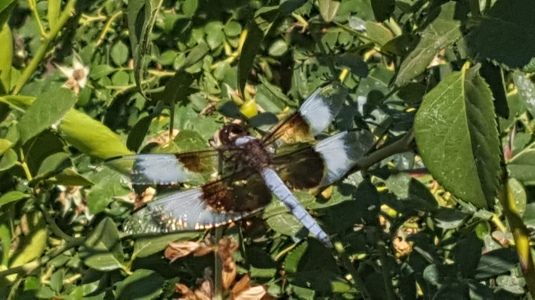 My sons grew up believing that dragonflies would stitch their ears closed, courtesy of a fourth grade teacher they were all fortunate to wind up having. It took a while before they would uncover their ears when one would fly by.
My sons grew up believing that dragonflies would stitch their ears closed, courtesy of a fourth grade teacher they were all fortunate to wind up having. It took a while before they would uncover their ears when one would fly by.

To me, these creatures are some of the most beautiful in the insect world. Yeah yeah, butterflies are pretty, too, but dragonflies and damselflies are so unique and so prehistoric looking. They are graceful flyers with their gossamer wings and colorful bodies. What’s even better is that they are awesome assassins. **Cue soundtrack of screeching brakes** What???
(All links open a new page, so you won’t lose your spot when you look around! Get information on gardening and cultural traditions, recipes, stories, and more!)

Dragonflies and damselflies are natural bug predators. Their larvae will eat anything smaller than themselves (even small fish and tadpoles), and the adults are great at catching smaller, flying insects. You know, things like mosquitos. I bet you like them now, don’t you? Yes, sometimes they catch things you want to keep, but it’s a small price to pay for the removal of the critters you don’t.
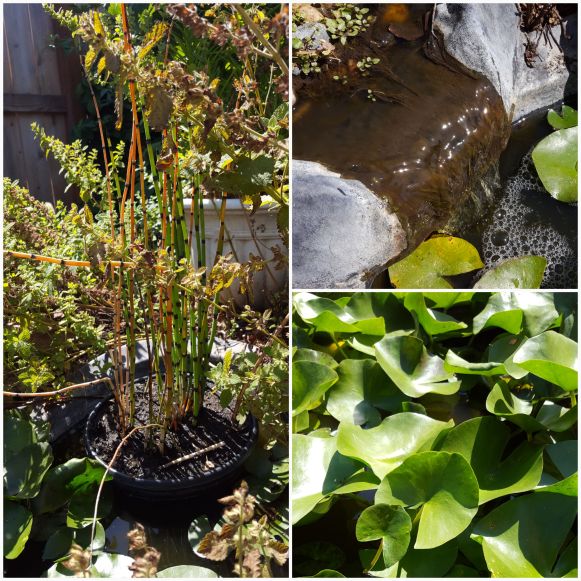
The best way to keep these creatures around is to have a yard that provides food and a place to lay their eggs. Dragonflies and damselflies are partly aquatic, they lay the eggs in water and the juveniles stay in the water until they reach the adult stage. If you have a body of water nearby, you can just focus on having a garden with a variety of flowering plants to help attract the food for the dragonflies. Otherwise, you may want to provide your own little aquatic ecosystem to encourage them to stay a while, and really, it doesn’t have to be big!
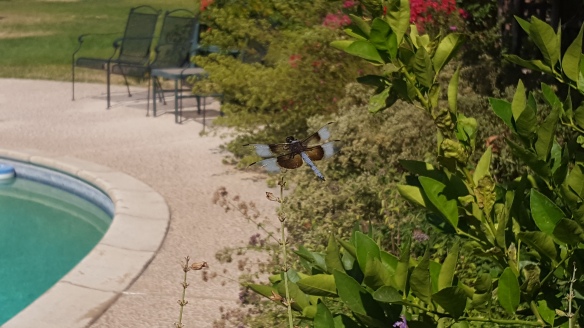
The catch is that having a little (or big) garden pond can also attract the very critters you are trying to eliminate: the mosquitos. They, too, lay their eggs in water. The difference is movement. Dragonflies will tolerate a garden pond with a gentle water flow, mosquitos won’t. Not only that, but the dragonfly larvae will eat the mosquito larvae, too! I have a small, 150 gallon pond in my yard. There is a pump that pulls water from the pond and funnels it to a small waterfall (you’ll see it in my post about growing watercress). Many pre-formed ponds have shelves for putting plants, but I have my pump placed there for easy access and to keep it from sucking up any larvae that may be hanging out on the bottom of the pond.
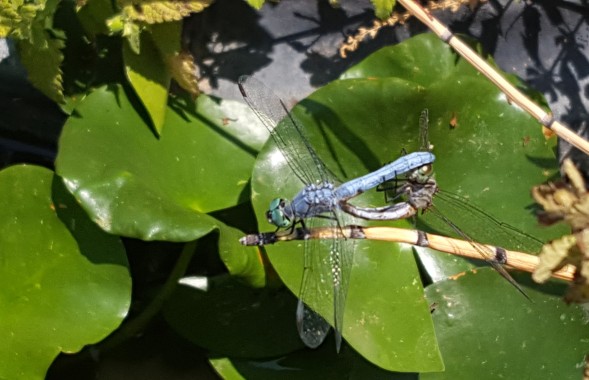
The other thing you will want are plants growing near and in the pond, especially ones that offer a place to perch. If you have ever watched them, you may have noticed that they prefer to land on a branch tip that offers them a view of what is around them. I have some mint growing around my pond and the tall spires of one of the varieties does the job. We’ve also put regular wooden garden stakes (in the 4-6 foot range), like those used for supporting climbing bean plants, in various places throughout our yard for them to perch on. It’s also good to have plants in the pond, as well. They provide hiding places for the larvae, as well as structures for them to climb up as they get ready to emerge from the water as adults. I have both water lilies, and horsetail (confined to a pot because they can be very invasive!) in the water offering both needs, and providing visual interest for the pond itself!
Resist the urge to keep your pond water sparkling clear. Also resist the urge to put fish in it, or put only varieties that stay small. Keeping a pond clear requires a huge amount of maintenance and won’t give your dragonfly and damselfly larvae any food. When I gave up trying to keep a “clean” pond, I was rewarded with more lily flowers and dragonflies. It was a good exchange. Fish will eat the larvae, which also defeats the purpose. If you get herbivorous fish, they’ll eat your plants. Boo.
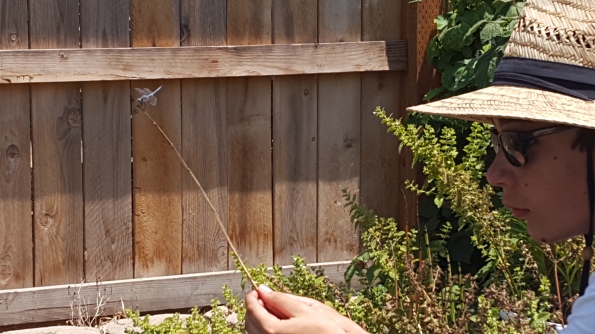
Dragonfly larvae are some of the creepiest looking things, so if for any reason you have to dig out stuff from your pond or even drain it, don’t get freaked out by them. They look like six-legged spiders with fat heads. Tasty thought, I know. They are harmless to you, even if they are kind of ugly. Set them aside in a small tank until your pond is ready again and reintroduce them to the water. Just think, dead mosquitos. It’s a lovely thought!



Entomology can be scary. The old movie ‘Alien’ is not that far fetched to aphid who are exploited by the parasitic wasps that control them. ICK!
LikeLiked by 1 person
The creepiest are the cordacepts fungi that infect insect hosts. Each species of fungus has a specific insect species it attacks. They digest them from the inside out. So lovely!
LikeLiked by 1 person
Yea, like ‘Alien’ only slower and ickier and creepier.
LikeLiked by 1 person
🤣
LikeLiked by 1 person